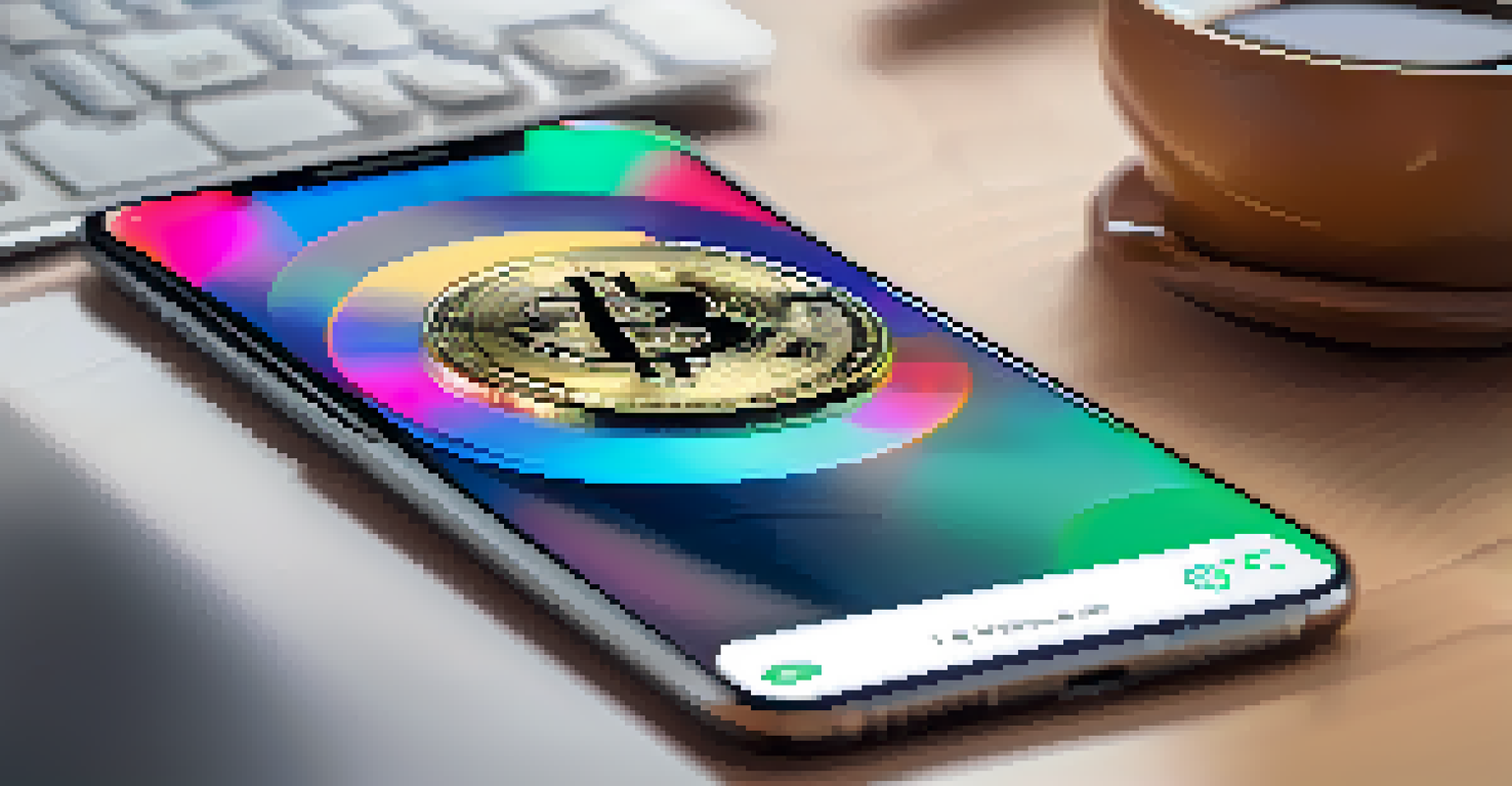Payment Methods in NFT Marketplaces: Exploring New Options

Understanding NFT Marketplaces and Payment Methods
NFT marketplaces are platforms where users can buy, sell, or trade non-fungible tokens (NFTs). These digital assets represent ownership of unique items, whether they be art, music, or virtual real estate. Payment methods play a crucial role in facilitating transactions within these marketplaces, impacting user experience and accessibility.
In the world of digital assets, cryptocurrencies like Ethereum remain a cornerstone for transactions, but flexibility in payment methods can unlock new opportunities for a wider audience.
Traditionally, cryptocurrencies like Ethereum have dominated NFT transactions due to their decentralized nature. However, as the NFT space grows, different payment options are emerging to cater to a broader audience. Understanding these methods is essential for both buyers and sellers looking to navigate this evolving landscape.
This exploration will highlight various payment methods available in NFT marketplaces, discussing their advantages and potential pitfalls. By doing so, we hope to empower users to make informed decisions when participating in this exciting digital economy.
Cryptocurrency: The Traditional Payment Method for NFTs
Cryptocurrencies, especially Ethereum (ETH), have been the backbone of NFT transactions since their inception. The decentralized nature of cryptocurrencies allows for direct transactions between buyers and sellers, eliminating the need for intermediaries like banks. This not only speeds up the process but also reduces transaction fees, making it appealing for those trading NFTs.

However, the volatility of cryptocurrencies can be a double-edged sword. While the potential for gains is enticing, the fluctuating value can lead to uncertainty during transactions. Buyers might hesitate to purchase an NFT if they fear the value of their crypto will drop before they finalize the deal.
NFT Marketplaces Use Various Payments
NFT marketplaces offer a range of payment methods, including cryptocurrencies, credit cards, and digital wallets, to facilitate transactions for users.
Despite these challenges, the popularity of cryptocurrency as a payment method remains strong. Many NFT marketplaces continue to support ETH and other major cryptocurrencies, ensuring that users have a secure and efficient way to engage in NFT transactions.
Credit Cards: Bridging the Gap for New Users
As the NFT market expands, many platforms are beginning to accept credit card payments, making it more accessible for newcomers. This option allows users to purchase NFTs without needing to first navigate the complexities of cryptocurrency wallets and exchanges. For many, using a credit card provides a familiar and straightforward payment experience.
Adapting to new technologies and payment solutions is essential for the growth and accessibility of the NFT marketplace, ensuring it caters to both seasoned enthusiasts and newcomers.
This method not only caters to those unfamiliar with crypto but also enables instant transactions. Buyers can quickly acquire NFTs without waiting for cryptocurrency transfers to be processed. Additionally, credit card transactions often come with buyer protections, offering an added layer of security for new users.
However, this convenience does come with its own set of challenges, such as higher transaction fees compared to crypto. Users should weigh the benefits of ease against the potential costs, ensuring they choose a payment method that aligns with their needs and preferences.
Stablecoins: A Solution for Volatility Concerns
Stablecoins have emerged as a popular alternative to traditional cryptocurrencies in NFT transactions. These digital currencies are pegged to stable assets like the US dollar, providing a buffer against the price volatility commonly associated with cryptocurrencies. This stability can be particularly appealing for buyers and sellers who want to avoid the risks of fluctuating values.
Using stablecoins allows users to transact in a familiar value framework, making it easier to assess the cost of NFTs. Many NFT marketplaces now accept stablecoins, offering a middle ground for those who want the benefits of blockchain technology without the associated risks. This can lead to a more stable trading environment overall.
Stablecoins Mitigate Crypto Volatility
Stablecoins provide a more stable alternative to traditional cryptocurrencies, helping users avoid the price fluctuations common in the NFT market.
However, it’s essential to note that not all marketplaces accept stablecoins. Users should verify the payment options available on their chosen platform to ensure they can transact in their preferred digital currency.
PayPal and Other Digital Wallets: Growing Acceptance
Digital wallets like PayPal are increasingly being integrated into NFT marketplaces, providing a familiar payment option for users. This method allows buyers to use their existing account balances or linked bank accounts to purchase NFTs, streamlining the payment process. As a result, it can attract users who may be hesitant to dive into the world of cryptocurrencies.
Moreover, digital wallets typically offer built-in security features, like buyer protection and fraud monitoring, which can enhance consumer confidence. This added layer of safety is particularly appealing to those new to the NFT space who may be wary of potential scams or losses.
However, the integration of PayPal and similar services may come with additional transaction fees. Users should consider these costs when choosing their payment method, as well as the overall convenience and familiarity that digital wallets provide.
Bank Transfers: A Traditional Yet Slow Option
Bank transfers are another payment method that some NFT marketplaces accept, particularly for larger transactions. This traditional method can offer a sense of security and familiarity for users who prefer dealing directly with their banks. However, the process can be slower compared to digital wallets or cryptocurrencies, often taking several days to complete.
While bank transfers can provide a stable payment option, they may not be suitable for the fast-paced nature of NFT trading. The delays in transaction times can lead to missed opportunities, especially in a market where prices can change rapidly. Additionally, some users may face higher fees associated with international transfers.
Future Innovations in Payment Methods
The NFT landscape is set to evolve with new payment technologies and partnerships, aiming to enhance transaction speed and broaden payment options for users.
Despite these drawbacks, bank transfers can be a reliable option for users making significant investments in NFTs. It’s essential to weigh the pros and cons when considering this payment method, especially regarding the speed and urgency of the transaction.
The Future of Payment Methods in NFT Marketplaces
As the NFT landscape continues to evolve, we can expect further innovation in payment methods. New technologies and platforms are emerging that could enhance transaction speed and security while also broadening the range of accepted currencies. This evolution will likely lead to a more diverse and inclusive NFT marketplace.
For instance, the growing popularity of decentralized finance (DeFi) could introduce more flexible payment options that allow for seamless integration with other blockchain services. Additionally, as more users become interested in NFTs, platforms may explore partnerships with financial institutions to offer even more payment choices.

Ultimately, the goal is to create a user-friendly experience that caters to both seasoned crypto enthusiasts and newcomers alike. By keeping an eye on emerging trends, users can stay informed and ready to adapt as the NFT marketplace continues to expand.